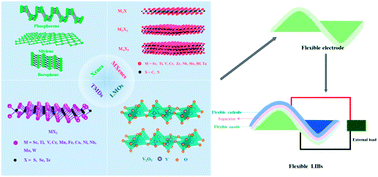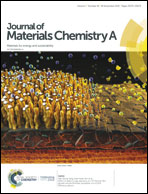Emerging two-dimensional noncarbon nanomaterials for flexible lithium-ion batteries: opportunities and challenges
Abstract
The flexible electronics technology revolution is driven ever forward by a strong demand for portable, wearable and lightweight electronic products in the market. Flexible lithium-ion batteries (LIBs) have attracted considerable attention because of their excellent electrochemical and mechanical properties. Due to the particular folded structure, high electrical conductivity and excellent flexibility, several emerging two-dimensional (2D) noncarbon nanomaterials such as phosphorene, borophene, MoS2, Ti3C2Tx and V2O5 have been widely applied to flexible LIBs with bright prospects. This review examines the existing literature and recent advances of flexible LIBs based on 2D materials, covering the classifications, synthetic methods and merits of emerging 2D noncarbon nanomaterials. Theoretical research and practical applications of emerging 2D noncarbon nanomaterials as electrode materials for flexible LIBs are reviewed as well. In addition, challenges faced by emerging 2D noncarbon nanomaterials are summarized and prospects of these 2D nanomaterials are given in order to broaden their potential in flexible LIBs.

- This article is part of the themed collection: Recent Review Articles


 Please wait while we load your content...
Please wait while we load your content...